We tested the Vivobook S 15 OLED with Qualcomm's Snapdragon X Elite processor just a few months ago. It was a good everyday computer with a great OLED screen. In addition to the limitations of the ARM architecture and the associated compatibility problems, the price was particularly problematic, as the RRP was US$1,269.99 and therefore on a par with (or even higher than) the comparable variants with Intel/AMD processors.
To coincide with the launch of the new Snapdragon X Plus models with 8 CPU cores, Asus is bringing a corresponding configuration of the Vivobook S 15 onto the market. However, the price jump is not as big as expected, as the RRP is 1,149 euros (~US$1,270). Apart from the processor, the equipment is identical with the high-resolution 120 Hz OLED screen, 16 GB LPDDR5x-8448 RAM, and a 512 GB SSD. But what compromises do you have to make with the new Snapdragon chip, and is the performance still sufficient for most everyday tasks?
In this review, we focus on the performance of the new Snapdragon X Plus as well as emissions and battery life. In the other sections, there are no differences to the previously tested Vivobook S 15 OLED, which is why we refer you to our review of the Snapdragon S 15 OLED for more information on the casing, features, input devices and display our test report of the Snapdragon X Elite variant for more information.
Possible competitors in comparison
Rating | Version | Date | Model | Weight | Height | Size | Resolution | Price |
|---|---|---|---|---|---|---|---|---|
| 80.7 % | v8 | 09 / 2024 | Asus VivoBook S 15 Snapdragon 8-Core SD X Plus X1P-42-100, Adreno X1-45 1.7 TFLOPS | 1.4 kg | 15.9 mm | 15.60" | 2880x1620 | |
| 83.3 % | v8 | 06 / 2024 | Asus Vivobook S 15 OLED Snapdragon SD X Elite X1E-78-100, Adreno X1-85 3.8 TFLOPS | 1.4 kg | 15.9 mm | 15.60" | 2880x1620 | |
| 84.7 % | v8 | 08 / 2024 | Schenker XMG Evo 15 (M24) Ultra 7 155H, Arc 8-Core | 1.7 kg | 19.9 mm | 15.30" | 2560x1600 | |
| 80.2 % | v8 | 07 / 2024 | Samsung Galaxy Book4 Edge 16 SD X Elite X1E-80-100, Adreno X1-85 3.8 TFLOPS | 1.5 kg | 12.3 mm | 16.00" | 2880x1800 | |
| 76.7 % | v8 | 07 / 2024 | Medion S10 OLED Ultra 7 155H, Arc 8-Core | 1.6 kg | 17.8 mm | 16.00" | 3840x2400 | |
| 89.7 % v7 (old) | v7 (old) | 04 / 2024 | Xiaomi RedmiBook Pro 16 2024 Ultra 7 155H, Arc 8-Core | 1.9 kg | 15.9 mm | 16.00" | 3072x1920 | |
| 87.9 % v7 (old) | v7 (old) | 05 / 2024 | Lenovo IdeaPad Pro 5 16IMH G9 Ultra 7 155H, Arc 8-Core | 1.9 kg | 17.5 mm | 16.00" | 2560x1600 |
Note: We have recently updated our rating system and the results of version 8 are not comparable with the results of version 7. Further information can be found here.
Case & equipment
Performance - Snapdragon X Plus with 8 cores
Qualcomm has introduced a total of three new Snapdragon X Plus models, and the Vivobook S 15 is equipped with the slowest variant. The X1P-42-100 offers eight cores and is combined with 16 GB LPDDR5x-8448 RAM, which cannot be upgraded. The NPU with 45 TOPS is identical to the other Snapdragon X processors.
Test conditions
Asus offers various energy profiles in the pre-installed MyAsus app, which we have listed in the following table. The TDP specifications come from the manufacturer, the pure CPU share of these are rounded values, as this value cannot be read out individually. The TDP specification for the current Snapdragon X processors also includes the controller and memory in addition to the processor. We carried out the following benchmarks and measurements with the default profile Standard. The Performance profile only provides better multi-core performance. There is also the Full Speed mode, but this only increases the speed of the fans.
| Fan mode | TDP SoC | TDP CPU | CB 2024 Multi | 3DMark Steel Nomad Light | max. Fan volume |
|---|---|---|---|---|---|
| Whisper | 20 watts | ~15 watts | 644 points | 1,143 points | 29.7 dB(A) |
| Standard | 25 watts | ~20 watts | 661 points | 1,147 points | 29.7 dB(A) |
| Power | 35 watts | ~25 watts | 759 points | 1,145 points | 42.8 dB(A) |
Processor - X1P-42-100
We have already tested the new X1P-42-100 in our Analysis article in detail. Basically, only the performance cluster (8 cores) with a maximum clock rate of 3.2 GHz is used here, whereas an active core can reach 3.4 GHz. The efficiency cluster of the more expensive Snapdragon SoCs is not installed here.
Due to the identical clock rate, the single-core performance in the benchmarks is unsurprisingly on par with the Snapdragon X Elite (X1E-78-100) in the Vivobook S 15 and is also very respectable. This also puts the smallest Snapdragon ahead of AMD's Zen4 chips and Intel's Meteor Lake CPUs. However, the current AMD Zen 5 processor is slightly faster. In the native multi-core tests, the small Snapdragon X Plus is clearly outperformed by the comparison devices with the Snapdragon X Elite or the Intel Core Ultra 7 155H. Our analysis has also shown that AMD is also ahead here.
The other CPU benchmarks that we perform on all devices are emulated on the ARM laptop. The performance here is again quite weak, and the Vivobook S 15 is actually always in last place in our comparison group. At least the performance remains almost identical under continuous load and in battery mode. Further CPU benchmarks can be found in our technology section.
Cinebench R15 Multi loop
Cinebench R23: Multi Core | Single Core
Cinebench R20: CPU (Multi Core) | CPU (Single Core)
Cinebench R15: CPU Multi 64Bit | CPU Single 64Bit
Blender: v2.79 BMW27 CPU
7-Zip 18.03: 7z b 4 | 7z b 4 -mmt1
Geekbench 6.5: Multi-Core | Single-Core
HWBOT x265 Benchmark v2.2: 4k Preset
LibreOffice : 20 Documents To PDF
R Benchmark 2.5: Overall mean
| CPU Performance rating | |
| Lenovo IdeaPad Pro 5 16IMH G9 | |
| Xiaomi RedmiBook Pro 16 2024 | |
| Average of class Multimedia | |
| Schenker XMG Evo 15 (M24) | |
| Medion S10 OLED | |
| Samsung Galaxy Book4 Edge 16 | |
| Asus Vivobook S 15 OLED Snapdragon | |
| Average Qualcomm Snapdragon X Plus X1P-42-100 | |
| Asus VivoBook S 15 Snapdragon 8-Core | |
| Cinebench R23 / Multi Core | |
| Lenovo IdeaPad Pro 5 16IMH G9 | |
| Xiaomi RedmiBook Pro 16 2024 | |
| Average of class Multimedia (4861 - 33362, n=79, last 2 years) | |
| Medion S10 OLED | |
| Schenker XMG Evo 15 (M24) | |
| Asus Vivobook S 15 OLED Snapdragon | |
| Samsung Galaxy Book4 Edge 16 | |
| Average Qualcomm Snapdragon X Plus X1P-42-100 (6062 - 8284, n=9) | |
| Asus VivoBook S 15 Snapdragon 8-Core | |
| Cinebench R23 / Single Core | |
| Average of class Multimedia (1128 - 2459, n=71, last 2 years) | |
| Medion S10 OLED | |
| Lenovo IdeaPad Pro 5 16IMH G9 | |
| Xiaomi RedmiBook Pro 16 2024 | |
| Schenker XMG Evo 15 (M24) | |
| Samsung Galaxy Book4 Edge 16 | |
| Asus Vivobook S 15 OLED Snapdragon | |
| Asus VivoBook S 15 Snapdragon 8-Core | |
| Average Qualcomm Snapdragon X Plus X1P-42-100 (1065 - 1134, n=9) | |
| Cinebench R20 / CPU (Multi Core) | |
| Lenovo IdeaPad Pro 5 16IMH G9 | |
| Xiaomi RedmiBook Pro 16 2024 | |
| Medion S10 OLED | |
| Average of class Multimedia (1887 - 12912, n=62, last 2 years) | |
| Schenker XMG Evo 15 (M24) | |
| Asus Vivobook S 15 OLED Snapdragon | |
| Samsung Galaxy Book4 Edge 16 | |
| Average Qualcomm Snapdragon X Plus X1P-42-100 (2361 - 3125, n=9) | |
| Asus VivoBook S 15 Snapdragon 8-Core | |
| Cinebench R20 / CPU (Single Core) | |
| Average of class Multimedia (420 - 853, n=62, last 2 years) | |
| Lenovo IdeaPad Pro 5 16IMH G9 | |
| Medion S10 OLED | |
| Schenker XMG Evo 15 (M24) | |
| Xiaomi RedmiBook Pro 16 2024 | |
| Samsung Galaxy Book4 Edge 16 | |
| Asus VivoBook S 15 Snapdragon 8-Core | |
| Asus Vivobook S 15 OLED Snapdragon | |
| Average Qualcomm Snapdragon X Plus X1P-42-100 (406 - 425, n=9) | |
| Cinebench R15 / CPU Multi 64Bit | |
| Xiaomi RedmiBook Pro 16 2024 | |
| Lenovo IdeaPad Pro 5 16IMH G9 | |
| Average of class Multimedia (856 - 5224, n=68, last 2 years) | |
| Medion S10 OLED | |
| Schenker XMG Evo 15 (M24) | |
| Asus Vivobook S 15 OLED Snapdragon | |
| Samsung Galaxy Book4 Edge 16 | |
| Average Qualcomm Snapdragon X Plus X1P-42-100 (1191 - 1560, n=9) | |
| Asus VivoBook S 15 Snapdragon 8-Core | |
| Cinebench R15 / CPU Single 64Bit | |
| Lenovo IdeaPad Pro 5 16IMH G9 | |
| Average of class Multimedia (99.6 - 326, n=65, last 2 years) | |
| Schenker XMG Evo 15 (M24) | |
| Medion S10 OLED | |
| Xiaomi RedmiBook Pro 16 2024 | |
| Samsung Galaxy Book4 Edge 16 | |
| Asus Vivobook S 15 OLED Snapdragon | |
| Average Qualcomm Snapdragon X Plus X1P-42-100 (206 - 215, n=9) | |
| Asus VivoBook S 15 Snapdragon 8-Core | |
| Blender / v2.79 BMW27 CPU | |
| Average Qualcomm Snapdragon X Plus X1P-42-100 (398 - 683, n=9) | |
| Asus VivoBook S 15 Snapdragon 8-Core | |
| Samsung Galaxy Book4 Edge 16 | |
| Asus Vivobook S 15 OLED Snapdragon | |
| Average of class Multimedia (100 - 557, n=63, last 2 years) | |
| Schenker XMG Evo 15 (M24) | |
| Medion S10 OLED | |
| Lenovo IdeaPad Pro 5 16IMH G9 | |
| Xiaomi RedmiBook Pro 16 2024 | |
| 7-Zip 18.03 / 7z b 4 | |
| Lenovo IdeaPad Pro 5 16IMH G9 | |
| Xiaomi RedmiBook Pro 16 2024 | |
| Schenker XMG Evo 15 (M24) | |
| Average of class Multimedia (29095 - 130368, n=61, last 2 years) | |
| Medion S10 OLED | |
| Asus Vivobook S 15 OLED Snapdragon | |
| Samsung Galaxy Book4 Edge 16 | |
| Average Qualcomm Snapdragon X Plus X1P-42-100 (29238 - 32811, n=9) | |
| Asus VivoBook S 15 Snapdragon 8-Core | |
| 7-Zip 18.03 / 7z b 4 -mmt1 | |
| Average of class Multimedia (3666 - 7545, n=61, last 2 years) | |
| Schenker XMG Evo 15 (M24) | |
| Medion S10 OLED | |
| Xiaomi RedmiBook Pro 16 2024 | |
| Lenovo IdeaPad Pro 5 16IMH G9 | |
| Samsung Galaxy Book4 Edge 16 | |
| Asus Vivobook S 15 OLED Snapdragon | |
| Asus VivoBook S 15 Snapdragon 8-Core | |
| Average Qualcomm Snapdragon X Plus X1P-42-100 (4087 - 4675, n=9) | |
| Geekbench 6.5 / Multi-Core | |
| Samsung Galaxy Book4 Edge 16 | |
| Asus Vivobook S 15 OLED Snapdragon | |
| Average of class Multimedia (4983 - 25760, n=75, last 2 years) | |
| Xiaomi RedmiBook Pro 16 2024 | |
| Lenovo IdeaPad Pro 5 16IMH G9 | |
| Schenker XMG Evo 15 (M24) | |
| Medion S10 OLED | |
| Asus VivoBook S 15 Snapdragon 8-Core | |
| Average Qualcomm Snapdragon X Plus X1P-42-100 (7609 - 14998, n=9) | |
| Geekbench 6.5 / Single-Core | |
| Samsung Galaxy Book4 Edge 16 | |
| Average of class Multimedia (1534 - 4326, n=71, last 2 years) | |
| Schenker XMG Evo 15 (M24) | |
| Medion S10 OLED | |
| Lenovo IdeaPad Pro 5 16IMH G9 | |
| Asus Vivobook S 15 OLED Snapdragon | |
| Asus VivoBook S 15 Snapdragon 8-Core | |
| Xiaomi RedmiBook Pro 16 2024 | |
| Average Qualcomm Snapdragon X Plus X1P-42-100 (2271 - 2675, n=8) | |
| HWBOT x265 Benchmark v2.2 / 4k Preset | |
| Lenovo IdeaPad Pro 5 16IMH G9 | |
| Xiaomi RedmiBook Pro 16 2024 | |
| Average of class Multimedia (5.26 - 36.1, n=61, last 2 years) | |
| Schenker XMG Evo 15 (M24) | |
| Medion S10 OLED | |
| Asus Vivobook S 15 OLED Snapdragon | |
| Samsung Galaxy Book4 Edge 16 | |
| Asus VivoBook S 15 Snapdragon 8-Core | |
| Average Qualcomm Snapdragon X Plus X1P-42-100 (3.16 - 6.18, n=9) | |
| LibreOffice / 20 Documents To PDF | |
| Asus VivoBook S 15 Snapdragon 8-Core | |
| Asus Vivobook S 15 OLED Snapdragon | |
| Average Qualcomm Snapdragon X Plus X1P-42-100 (55.3 - 62.7, n=9) | |
| Samsung Galaxy Book4 Edge 16 | |
| Average of class Multimedia (23.9 - 146.7, n=62, last 2 years) | |
| Medion S10 OLED | |
| Xiaomi RedmiBook Pro 16 2024 | |
| Schenker XMG Evo 15 (M24) | |
| Lenovo IdeaPad Pro 5 16IMH G9 | |
| R Benchmark 2.5 / Overall mean | |
| Asus Vivobook S 15 OLED Snapdragon | |
| Average Qualcomm Snapdragon X Plus X1P-42-100 (0.728 - 0.777, n=9) | |
| Asus VivoBook S 15 Snapdragon 8-Core | |
| Samsung Galaxy Book4 Edge 16 | |
| Average of class Multimedia (0.3604 - 0.947, n=61, last 2 years) | |
| Xiaomi RedmiBook Pro 16 2024 | |
| Medion S10 OLED | |
| Lenovo IdeaPad Pro 5 16IMH G9 | |
| Schenker XMG Evo 15 (M24) | |
* ... smaller is better
AIDA64: FP32 Ray-Trace | FPU Julia | CPU SHA3 | CPU Queen | FPU SinJulia | FPU Mandel | CPU AES | CPU ZLib | FP64 Ray-Trace | CPU PhotoWorxx
| Performance rating | |
| Lenovo IdeaPad Pro 5 16IMH G9 | |
| Average of class Multimedia | |
| Xiaomi RedmiBook Pro 16 2024 | |
| Schenker XMG Evo 15 (M24) | |
| Medion S10 OLED | |
| Asus Vivobook S 15 OLED Snapdragon | |
| Samsung Galaxy Book4 Edge 16 | |
| Average Qualcomm Snapdragon X Plus X1P-42-100 | |
| Asus VivoBook S 15 Snapdragon 8-Core | |
| AIDA64 / FP32 Ray-Trace | |
| Lenovo IdeaPad Pro 5 16IMH G9 | |
| Average of class Multimedia (2214 - 50388, n=58, last 2 years) | |
| Medion S10 OLED | |
| Xiaomi RedmiBook Pro 16 2024 | |
| Schenker XMG Evo 15 (M24) | |
| Asus Vivobook S 15 OLED Snapdragon | |
| Samsung Galaxy Book4 Edge 16 | |
| Average Qualcomm Snapdragon X Plus X1P-42-100 (1480 - 6208, n=8) | |
| Asus VivoBook S 15 Snapdragon 8-Core | |
| AIDA64 / FPU Julia | |
| Lenovo IdeaPad Pro 5 16IMH G9 | |
| Average of class Multimedia (12867 - 201874, n=59, last 2 years) | |
| Xiaomi RedmiBook Pro 16 2024 | |
| Medion S10 OLED | |
| Schenker XMG Evo 15 (M24) | |
| Asus Vivobook S 15 OLED Snapdragon | |
| Samsung Galaxy Book4 Edge 16 | |
| Average Qualcomm Snapdragon X Plus X1P-42-100 (14234 - 17585, n=8) | |
| Asus VivoBook S 15 Snapdragon 8-Core | |
| AIDA64 / CPU SHA3 | |
| Lenovo IdeaPad Pro 5 16IMH G9 | |
| Average of class Multimedia (653 - 8623, n=59, last 2 years) | |
| Xiaomi RedmiBook Pro 16 2024 | |
| Medion S10 OLED | |
| Schenker XMG Evo 15 (M24) | |
| Asus Vivobook S 15 OLED Snapdragon | |
| Samsung Galaxy Book4 Edge 16 | |
| Average Qualcomm Snapdragon X Plus X1P-42-100 (2036 - 2614, n=8) | |
| Asus VivoBook S 15 Snapdragon 8-Core | |
| AIDA64 / CPU Queen | |
| Xiaomi RedmiBook Pro 16 2024 | |
| Lenovo IdeaPad Pro 5 16IMH G9 | |
| Average of class Multimedia (13483 - 181505, n=59, last 2 years) | |
| Schenker XMG Evo 15 (M24) | |
| Medion S10 OLED | |
| Samsung Galaxy Book4 Edge 16 | |
| Asus Vivobook S 15 OLED Snapdragon | |
| Asus VivoBook S 15 Snapdragon 8-Core | |
| Average Qualcomm Snapdragon X Plus X1P-42-100 (44346 - 48581, n=8) | |
| AIDA64 / FPU SinJulia | |
| Lenovo IdeaPad Pro 5 16IMH G9 | |
| Xiaomi RedmiBook Pro 16 2024 | |
| Average of class Multimedia (1240 - 28794, n=59, last 2 years) | |
| Schenker XMG Evo 15 (M24) | |
| Medion S10 OLED | |
| Asus Vivobook S 15 OLED Snapdragon | |
| Samsung Galaxy Book4 Edge 16 | |
| Average Qualcomm Snapdragon X Plus X1P-42-100 (1240 - 1502, n=8) | |
| Asus VivoBook S 15 Snapdragon 8-Core | |
| AIDA64 / FPU Mandel | |
| Lenovo IdeaPad Pro 5 16IMH G9 | |
| Average of class Multimedia (6395 - 105740, n=58, last 2 years) | |
| Medion S10 OLED | |
| Xiaomi RedmiBook Pro 16 2024 | |
| Schenker XMG Evo 15 (M24) | |
| Samsung Galaxy Book4 Edge 16 | |
| Asus Vivobook S 15 OLED Snapdragon | |
| Asus VivoBook S 15 Snapdragon 8-Core | |
| Average Qualcomm Snapdragon X Plus X1P-42-100 (4929 - 9929, n=8) | |
| AIDA64 / CPU AES | |
| Schenker XMG Evo 15 (M24) | |
| Lenovo IdeaPad Pro 5 16IMH G9 | |
| Average of class Multimedia (13243 - 169946, n=59, last 2 years) | |
| Xiaomi RedmiBook Pro 16 2024 | |
| Medion S10 OLED | |
| Samsung Galaxy Book4 Edge 16 | |
| Asus Vivobook S 15 OLED Snapdragon | |
| Average Qualcomm Snapdragon X Plus X1P-42-100 (37646 - 45232, n=8) | |
| Asus VivoBook S 15 Snapdragon 8-Core | |
| AIDA64 / CPU ZLib | |
| Lenovo IdeaPad Pro 5 16IMH G9 | |
| Xiaomi RedmiBook Pro 16 2024 | |
| Medion S10 OLED | |
| Average of class Multimedia (167.2 - 2022, n=59, last 2 years) | |
| Schenker XMG Evo 15 (M24) | |
| Asus Vivobook S 15 OLED Snapdragon | |
| Samsung Galaxy Book4 Edge 16 | |
| Average Qualcomm Snapdragon X Plus X1P-42-100 (473 - 523, n=8) | |
| Asus VivoBook S 15 Snapdragon 8-Core | |
| AIDA64 / FP64 Ray-Trace | |
| Average of class Multimedia (1014 - 26875, n=59, last 2 years) | |
| Lenovo IdeaPad Pro 5 16IMH G9 | |
| Medion S10 OLED | |
| Xiaomi RedmiBook Pro 16 2024 | |
| Schenker XMG Evo 15 (M24) | |
| Asus Vivobook S 15 OLED Snapdragon | |
| Samsung Galaxy Book4 Edge 16 | |
| Average Qualcomm Snapdragon X Plus X1P-42-100 (2262 - 3430, n=8) | |
| Asus VivoBook S 15 Snapdragon 8-Core | |
| AIDA64 / CPU PhotoWorxx | |
| Lenovo IdeaPad Pro 5 16IMH G9 | |
| Xiaomi RedmiBook Pro 16 2024 | |
| Schenker XMG Evo 15 (M24) | |
| Average of class Multimedia (12860 - 65787, n=59, last 2 years) | |
| Medion S10 OLED | |
| Asus Vivobook S 15 OLED Snapdragon | |
| Samsung Galaxy Book4 Edge 16 | |
| Asus VivoBook S 15 Snapdragon 8-Core | |
| Average Qualcomm Snapdragon X Plus X1P-42-100 (31088 - 32224, n=8) | |
System performance
The results are mixed in the synthetic system benchmarks: The small Snapdragon performs quite weakly in the cross-system CrossMark, but the browser tests show a different picture. In practice, you don't notice any differences to the faster Snapdragon chips most of the time, and the Windows experience is very smooth and responsive. However, we had a few situations where the system had slight stutters or pauses, for example when waking up from standby or in the settings. However, as long as you use native apps, there should be no problems with performance. We have already discussed the problems with x86 apps and peripherals in detail, and Microsoft also points out the limitations.
WebXPRT 3: Overall
WebXPRT 4: Overall
Mozilla Kraken 1.1: Total
| CrossMark / Overall | |
| Schenker XMG Evo 15 (M24) | |
| Xiaomi RedmiBook Pro 16 2024 | |
| Average of class Multimedia (866 - 2426, n=63, last 2 years) | |
| Medion S10 OLED | |
| Lenovo IdeaPad Pro 5 16IMH G9 | |
| Samsung Galaxy Book4 Edge 16 | |
| Average Qualcomm Snapdragon X Plus X1P-42-100, Qualcomm SD X Adreno X1-45 1.7 TFLOPS (1061 - 1463, n=9) | |
| Asus VivoBook S 15 Snapdragon 8-Core | |
| Asus Vivobook S 15 OLED Snapdragon | |
| CrossMark / Productivity | |
| Schenker XMG Evo 15 (M24) | |
| Xiaomi RedmiBook Pro 16 2024 | |
| Average of class Multimedia (913 - 2344, n=63, last 2 years) | |
| Medion S10 OLED | |
| Lenovo IdeaPad Pro 5 16IMH G9 | |
| Samsung Galaxy Book4 Edge 16 | |
| Average Qualcomm Snapdragon X Plus X1P-42-100, Qualcomm SD X Adreno X1-45 1.7 TFLOPS (1059 - 1284, n=9) | |
| Asus VivoBook S 15 Snapdragon 8-Core | |
| Asus Vivobook S 15 OLED Snapdragon | |
| CrossMark / Creativity | |
| Average of class Multimedia (907 - 2820, n=63, last 2 years) | |
| Xiaomi RedmiBook Pro 16 2024 | |
| Schenker XMG Evo 15 (M24) | |
| Lenovo IdeaPad Pro 5 16IMH G9 | |
| Medion S10 OLED | |
| Samsung Galaxy Book4 Edge 16 | |
| Average Qualcomm Snapdragon X Plus X1P-42-100, Qualcomm SD X Adreno X1-45 1.7 TFLOPS (1070 - 1660, n=9) | |
| Asus VivoBook S 15 Snapdragon 8-Core | |
| Asus Vivobook S 15 OLED Snapdragon | |
| CrossMark / Responsiveness | |
| Schenker XMG Evo 15 (M24) | |
| Xiaomi RedmiBook Pro 16 2024 | |
| Medion S10 OLED | |
| Average of class Multimedia (605 - 2094, n=63, last 2 years) | |
| Samsung Galaxy Book4 Edge 16 | |
| Average Qualcomm Snapdragon X Plus X1P-42-100, Qualcomm SD X Adreno X1-45 1.7 TFLOPS (989 - 1563, n=9) | |
| Lenovo IdeaPad Pro 5 16IMH G9 | |
| Asus VivoBook S 15 Snapdragon 8-Core | |
| Asus Vivobook S 15 OLED Snapdragon | |
| WebXPRT 3 / Overall | |
| Samsung Galaxy Book4 Edge 16 | |
| Asus Vivobook S 15 OLED Snapdragon | |
| Asus VivoBook S 15 Snapdragon 8-Core | |
| Average Qualcomm Snapdragon X Plus X1P-42-100, Qualcomm SD X Adreno X1-45 1.7 TFLOPS (129.9 - 426, n=9) | |
| Average of class Multimedia (136.4 - 545, n=66, last 2 years) | |
| Lenovo IdeaPad Pro 5 16IMH G9 | |
| Schenker XMG Evo 15 (M24) | |
| Xiaomi RedmiBook Pro 16 2024 | |
| Medion S10 OLED | |
| WebXPRT 4 / Overall | |
| Samsung Galaxy Book4 Edge 16 | |
| Asus Vivobook S 15 OLED Snapdragon | |
| Asus VivoBook S 15 Snapdragon 8-Core | |
| Average of class Multimedia (167.3 - 384, n=65, last 2 years) | |
| Schenker XMG Evo 15 (M24) | |
| Lenovo IdeaPad Pro 5 16IMH G9 | |
| Average Qualcomm Snapdragon X Plus X1P-42-100, Qualcomm SD X Adreno X1-45 1.7 TFLOPS (130.3 - 284, n=9) | |
| Xiaomi RedmiBook Pro 16 2024 | |
| Medion S10 OLED | |
| Mozilla Kraken 1.1 / Total | |
| Average Qualcomm Snapdragon X Plus X1P-42-100, Qualcomm SD X Adreno X1-45 1.7 TFLOPS (396 - 1145, n=9) | |
| Medion S10 OLED | |
| Medion S10 OLED | |
| Schenker XMG Evo 15 (M24) | |
| Xiaomi RedmiBook Pro 16 2024 | |
| Lenovo IdeaPad Pro 5 16IMH G9 | |
| Asus VivoBook S 15 Snapdragon 8-Core | |
| Average of class Multimedia (228 - 835, n=69, last 2 years) | |
| Asus Vivobook S 15 OLED Snapdragon | |
| Samsung Galaxy Book4 Edge 16 | |
* ... smaller is better
» No benchmarks for this notebook found!
| AIDA64 / Memory Copy | |
| Lenovo IdeaPad Pro 5 16IMH G9 | |
| Xiaomi RedmiBook Pro 16 2024 | |
| Average of class Multimedia (21158 - 109252, n=59, last 2 years) | |
| Schenker XMG Evo 15 (M24) | |
| Medion S10 OLED | |
| Samsung Galaxy Book4 Edge 16 | |
| Asus VivoBook S 15 Snapdragon 8-Core | |
| Average Qualcomm Snapdragon X Plus X1P-42-100 (61258 - 62755, n=8) | |
| Asus Vivobook S 15 OLED Snapdragon | |
| AIDA64 / Memory Read | |
| Average Qualcomm Snapdragon X Plus X1P-42-100 (123557 - 128030, n=8) | |
| Samsung Galaxy Book4 Edge 16 | |
| Asus VivoBook S 15 Snapdragon 8-Core | |
| Asus Vivobook S 15 OLED Snapdragon | |
| Lenovo IdeaPad Pro 5 16IMH G9 | |
| Xiaomi RedmiBook Pro 16 2024 | |
| Average of class Multimedia (19699 - 125604, n=59, last 2 years) | |
| Schenker XMG Evo 15 (M24) | |
| Medion S10 OLED | |
| AIDA64 / Memory Write | |
| Lenovo IdeaPad Pro 5 16IMH G9 | |
| Average of class Multimedia (17733 - 117933, n=59, last 2 years) | |
| Schenker XMG Evo 15 (M24) | |
| Xiaomi RedmiBook Pro 16 2024 | |
| Medion S10 OLED | |
| Average Qualcomm Snapdragon X Plus X1P-42-100 (45782 - 48716, n=8) | |
| Asus VivoBook S 15 Snapdragon 8-Core | |
| Samsung Galaxy Book4 Edge 16 | |
| Asus Vivobook S 15 OLED Snapdragon | |
| AIDA64 / Memory Latency | |
| Medion S10 OLED | |
| Xiaomi RedmiBook Pro 16 2024 | |
| Lenovo IdeaPad Pro 5 16IMH G9 | |
| Schenker XMG Evo 15 (M24) | |
| Average of class Multimedia (7 - 535, n=59, last 2 years) | |
| Samsung Galaxy Book4 Edge 16 | |
| Asus Vivobook S 15 OLED Snapdragon | |
| Average Qualcomm Snapdragon X Plus X1P-42-100 (6.8 - 7.7, n=4) | |
| Asus VivoBook S 15 Snapdragon 8-Core | |
* ... smaller is better
DPC latencies
We were unable to carry out our standardized latency test as the LatencyMon application does not work. However, we can at least say that there were no dropped frames when playing a 4K YouTube video.
Mass storage
The 512 GB version of the WD SN740 is installed in the test device. It is an M.2 2280 SSD with PCIe 4.0 connection and solid transfer rates. In addition, the performance remains completely stable even under prolonged load. After the initial start-up, the user has 426 GB at their disposal. Further SSD benchmarks can be found here.
* ... smaller is better
Contionuous read: DiskSpd Read Loop, Queue Depth 8
Graphics card - Adreno X1-45
The new 8-core Snapdragon X Plus models are equipped with the weaker Adreno X1-45 which is available in two performance levels (2.1 or 1.7 TFLOPS). The smaller X1P-42-100 is equipped with the slower variant with 1.7 TFLOPS and a maximum GPU clock rate of 1.107 GHz. Basically, the performance is 50% lower than the Adreno X1-85 with 3.8 TFLOPS, and in the GPU benchmarks the X1-45 also has to make do with last place.
What does this mean for everyday use? Actually, not that much at first, as the performance is still sufficient for basic tasks including the playback of high-resolution videos. Gaming was already a problem with the Snapdragon X Elite chips due to compatibility issues, and the situation is further exacerbated with the new Snapdragon X Plus and the X1-45 GPU. Even when old titles run smoothly with low details, we sometimes had significant frame drops, which is why gaming is no fun.
The graphics performance at least remains stable under prolonged load as well as in battery mode. Further GPU benchmarks are available here.
| 3DMark 11 Performance | 4438 points | |
| 3DMark Cloud Gate Standard Score | 19040 points | |
| 3DMark Fire Strike Score | 3691 points | |
| 3DMark Time Spy Score | 981 points | |
| 3DMark Steel Nomad Score | 232 points | |
| 3DMark Steel Nomad Light Score | 1147 points | |
Help | ||
* ... smaller is better
| The Witcher 3 - 1920x1080 Ultra Graphics & Postprocessing (HBAO+) | |
| Average of class Multimedia (11 - 121, n=29, last 2 years) | |
| Schenker XMG Evo 15 (M24) | |
| Lenovo IdeaPad Pro 5 16IMH G9 | |
| Xiaomi RedmiBook Pro 16 2024 | |
| Asus Vivobook S 15 OLED Snapdragon | |
| Asus VivoBook S 15 Snapdragon 8-Core | |
Cyberpunk 2077 Ultra FPS chart
| low | med. | high | ultra | |
|---|---|---|---|---|
| GTA V (2015) | 95.9 | 91.2 | 33 | 14 |
| The Witcher 3 (2015) | 68 | 41 | 22 | 11 |
| Dota 2 Reborn (2015) | 80.3 | 66 | 55.2 | 47.9 |
| Final Fantasy XV Benchmark (2018) | 37.1 | 15.1 | 10 | |
| Far Cry 5 (2018) | 37 | 21 | 19 | 17 |
| Strange Brigade (2018) | 83 | 30 | 23 | 19 |
| F1 22 (2022) | 33.7 | 38.3 | 22.9 | 16.2 |
| Baldur's Gate 3 (2023) | 13.1 | 10.9 | 9.5 | 9.1 |
| Cyberpunk 2077 (2023) | 14.4 | 11.2 | 9.5 | 8.26 |
Emissions & Energy
Noise emissions
The clearly lower performance of the new Snapdragon X Plus has a positive effect on the fans, as the cooling has significantly less to do and the Vivobook S 15 remains a very quiet device overall. You will practically never hear the fans during everyday use. This is definitely a big advantage over the faster Snapdragon X Elite model, which was slightly louder even in whisper mode (~33 dB(A)). We also measured just 29.7 dB(A) in standard fan mode when gaming or in the stress test (also applies to whisper mode). It gets noticeably louder in performance mode at 42.8 dB(A), and full-speed mode is absurdly loud at a maximum of 51.2 dB(A). There were no other electronic noises on the test device.
| Fan mode | Cyberpunk 2077 | Stress test |
|---|---|---|
| Whisper | 29.7 dB(A) | 29.7 dB(A) |
| Standard | 29.7 dB(A) | 29.7 dB(A) |
| Power | 32.3 dB(A) | 42.8 dB(A) |
| Full speed | 32.3 dB(A) | 51.2 dB(A) |
Noise level
| Idle |
| 23.7 / 23.7 / 23.7 dB(A) |
| Load |
| 23.7 / 29.7 dB(A) |
 | ||
30 dB silent 40 dB(A) audible 50 dB(A) loud |
||
min: | ||
| Asus VivoBook S 15 Snapdragon 8-Core Adreno X1-45 1.7 TFLOPS, SD X Plus X1P-42-100, WD PC SN740 SDDPNQD-1T00 | Asus Vivobook S 15 OLED Snapdragon Adreno X1-85 3.8 TFLOPS, SD X Elite X1E-78-100, Micron 2400 MTFDKBA1T0QFM | Schenker XMG Evo 15 (M24) Arc 8-Core, Ultra 7 155H, Samsung 990 Pro 1 TB | Samsung Galaxy Book4 Edge 16 Adreno X1-85 3.8 TFLOPS, SD X Elite X1E-80-100, Kioxia THGJFJT2T85BAT01 | Medion S10 OLED Arc 8-Core, Ultra 7 155H, Phison PS5019-E19 SSO1TBITC4-E19-V7 | Xiaomi RedmiBook Pro 16 2024 Arc 8-Core, Ultra 7 155H, YMTC PC300-1TB | Lenovo IdeaPad Pro 5 16IMH G9 Arc 8-Core, Ultra 7 155H, Samsung PM9C1a MZAL81T0HDLB | |
|---|---|---|---|---|---|---|---|
| Noise | -16% | -21% | -8% | -33% | -14% | -27% | |
| off / environment * (dB) | 23.7 | 24.3 -3% | 24.7 -4% | 24.6 -4% | 25 -5% | 24.4 -3% | 24.1 -2% |
| Idle Minimum * (dB) | 23.7 | 24.3 -3% | 24.7 -4% | 24.6 -4% | 26 -10% | 24.4 -3% | 24.1 -2% |
| Idle Average * (dB) | 23.7 | 24.3 -3% | 24.7 -4% | 24.6 -4% | 27 -14% | 24.4 -3% | 24.1 -2% |
| Idle Maximum * (dB) | 23.7 | 26.2 -11% | 28.9 -22% | 24.6 -4% | 28 -18% | 24.4 -3% | 28.2 -19% |
| Load Average * (dB) | 23.7 | 32.5 -37% | 32.7 -38% | 28.1 -19% | 43 -81% | 32 -35% | 44.4 -87% |
| Cyberpunk 2077 ultra * (dB) | 29.7 | 35.2 -19% | 40.4 -36% | 32.4 -9% | 42 -41% | ||
| Load Maximum * (dB) | 29.7 | 39.8 -34% | 40.4 -36% | 32.4 -9% | 48 -62% | 39.7 -34% | 44.4 -49% |
| Witcher 3 ultra * (dB) | 30.6 | 36.5 |
* ... smaller is better
Temperature
There are no problems at all with the Vivobook S 15's casing temperatures. The case barely warms up when idling and doing simple things, and the device can also be placed on the thighs during the stress test. The hotspot with a maximum of 49.9 °C is on the underside in the rear middle area, where there should be no skin contact. Overall, the temperatures under load are also a few degrees cooler than the faster Snapdragon X Elite model. There are no restrictions when using the keyboard.
In the stress test with combined CPU/GPU load, the graphics card constantly operates at the full 1,107 MHz, while the CPU cores quickly level off at 2.7 GHz. The chip temperature is a harmless 70 °C.
(±) The maximum temperature on the upper side is 41.8 °C / 107 F, compared to the average of 36.9 °C / 98 F, ranging from 21.1 to 71 °C for the class Multimedia.
(-) The bottom heats up to a maximum of 49.9 °C / 122 F, compared to the average of 39.2 °C / 103 F
(+) In idle usage, the average temperature for the upper side is 27.4 °C / 81 F, compared to the device average of 31.3 °C / 88 F.
(+) Playing The Witcher 3, the average temperature for the upper side is 31.1 °C / 88 F, compared to the device average of 31.3 °C / 88 F.
(+) The palmrests and touchpad are cooler than skin temperature with a maximum of 29.7 °C / 85.5 F and are therefore cool to the touch.
(±) The average temperature of the palmrest area of similar devices was 28.7 °C / 83.7 F (-1 °C / -1.8 F).
| Asus VivoBook S 15 Snapdragon 8-Core Qualcomm Snapdragon X Plus X1P-42-100, Qualcomm SD X Adreno X1-45 1.7 TFLOPS | Asus Vivobook S 15 OLED Snapdragon Qualcomm Snapdragon X Elite X1E-78-100, Qualcomm SD X Adreno X1-85 3.8 TFLOPS | Schenker XMG Evo 15 (M24) Intel Core Ultra 7 155H, Intel Arc 8-Core iGPU | Samsung Galaxy Book4 Edge 16 Qualcomm Snapdragon X Elite X1E-80-100, Qualcomm SD X Adreno X1-85 3.8 TFLOPS | Medion S10 OLED Intel Core Ultra 7 155H, Intel Arc 8-Core iGPU | Xiaomi RedmiBook Pro 16 2024 Intel Core Ultra 7 155H, Intel Arc 8-Core iGPU | Lenovo IdeaPad Pro 5 16IMH G9 Intel Core Ultra 7 155H, Intel Arc 8-Core iGPU | |
|---|---|---|---|---|---|---|---|
| Heat | 1% | -5% | 4% | -17% | 6% | 15% | |
| Maximum Upper Side * (°C) | 41.8 | 43.6 -4% | 41.7 -0% | 44.3 -6% | 55 -32% | 40.3 4% | 36.3 13% |
| Maximum Bottom * (°C) | 49.9 | 53.1 -6% | 49.6 1% | 51.6 -3% | 55 -10% | 45.9 8% | 39.1 22% |
| Idle Upper Side * (°C) | 28.8 | 26.7 7% | 31.1 -8% | 25.1 13% | 32 -11% | 26.3 9% | 24.9 14% |
| Idle Bottom * (°C) | 29.1 | 27.2 7% | 33.1 -14% | 25.8 11% | 33 -13% | 27.9 4% | 26.1 10% |
* ... smaller is better
Speaker
Asus VivoBook S 15 Snapdragon 8-Core audio analysis
(±) | speaker loudness is average but good (79.9 dB)
Bass 100 - 315 Hz
(±) | reduced bass - on average 8.2% lower than median
(±) | linearity of bass is average (11% delta to prev. frequency)
Mids 400 - 2000 Hz
(+) | balanced mids - only 2.7% away from median
(+) | mids are linear (4.5% delta to prev. frequency)
Highs 2 - 16 kHz
(+) | balanced highs - only 3% away from median
(+) | highs are linear (5.8% delta to prev. frequency)
Overall 100 - 16.000 Hz
(+) | overall sound is linear (9.8% difference to median)
Compared to same class
» 11% of all tested devices in this class were better, 2% similar, 87% worse
» The best had a delta of 5%, average was 17%, worst was 45%
Compared to all devices tested
» 4% of all tested devices were better, 1% similar, 95% worse
» The best had a delta of 4%, average was 24%, worst was 134%
Samsung Galaxy Book4 Edge 16 audio analysis
(±) | speaker loudness is average but good (81.8 dB)
Bass 100 - 315 Hz
(±) | reduced bass - on average 10.6% lower than median
(±) | linearity of bass is average (11% delta to prev. frequency)
Mids 400 - 2000 Hz
(+) | balanced mids - only 4% away from median
(+) | mids are linear (3.9% delta to prev. frequency)
Highs 2 - 16 kHz
(+) | balanced highs - only 3.1% away from median
(±) | linearity of highs is average (7.2% delta to prev. frequency)
Overall 100 - 16.000 Hz
(+) | overall sound is linear (11.5% difference to median)
Compared to same class
» 15% of all tested devices in this class were better, 4% similar, 81% worse
» The best had a delta of 5%, average was 17%, worst was 45%
Compared to all devices tested
» 7% of all tested devices were better, 2% similar, 91% worse
» The best had a delta of 4%, average was 24%, worst was 134%
Asus Vivobook S16 S5606M audio analysis
(±) | speaker loudness is average but good (80.9 dB)
Bass 100 - 315 Hz
(-) | nearly no bass - on average 27.8% lower than median
(±) | linearity of bass is average (11.5% delta to prev. frequency)
Mids 400 - 2000 Hz
(+) | balanced mids - only 3.2% away from median
(+) | mids are linear (6.3% delta to prev. frequency)
Highs 2 - 16 kHz
(+) | balanced highs - only 2.4% away from median
(+) | highs are linear (3.7% delta to prev. frequency)
Overall 100 - 16.000 Hz
(±) | linearity of overall sound is average (18.5% difference to median)
Compared to same class
» 55% of all tested devices in this class were better, 7% similar, 38% worse
» The best had a delta of 5%, average was 17%, worst was 45%
Compared to all devices tested
» 41% of all tested devices were better, 8% similar, 52% worse
» The best had a delta of 4%, average was 24%, worst was 134%
Xiaomi RedmiBook Pro 16 2024 audio analysis
(+) | speakers can play relatively loud (83.8 dB)
Bass 100 - 315 Hz
(±) | reduced bass - on average 13.6% lower than median
(±) | linearity of bass is average (7.9% delta to prev. frequency)
Mids 400 - 2000 Hz
(±) | higher mids - on average 5.3% higher than median
(+) | mids are linear (5% delta to prev. frequency)
Highs 2 - 16 kHz
(+) | balanced highs - only 2.8% away from median
(+) | highs are linear (5.3% delta to prev. frequency)
Overall 100 - 16.000 Hz
(+) | overall sound is linear (13% difference to median)
Compared to same class
» 23% of all tested devices in this class were better, 5% similar, 72% worse
» The best had a delta of 5%, average was 17%, worst was 45%
Compared to all devices tested
» 12% of all tested devices were better, 2% similar, 85% worse
» The best had a delta of 4%, average was 24%, worst was 134%
Lenovo IdeaPad Pro 5 16IMH G9 audio analysis
(±) | speaker loudness is average but good (81.1 dB)
Bass 100 - 315 Hz
(-) | nearly no bass - on average 22.3% lower than median
(±) | linearity of bass is average (10.5% delta to prev. frequency)
Mids 400 - 2000 Hz
(+) | balanced mids - only 2.6% away from median
(+) | mids are linear (4.6% delta to prev. frequency)
Highs 2 - 16 kHz
(+) | balanced highs - only 1.2% away from median
(+) | highs are linear (3.9% delta to prev. frequency)
Overall 100 - 16.000 Hz
(+) | overall sound is linear (13.9% difference to median)
Compared to same class
» 29% of all tested devices in this class were better, 4% similar, 67% worse
» The best had a delta of 5%, average was 17%, worst was 45%
Compared to all devices tested
» 15% of all tested devices were better, 4% similar, 81% worse
» The best had a delta of 4%, average was 24%, worst was 134%
Power consumption
The energy consumption of the Vivobook S 15 is significantly lower than the SnapDragon X Elite variant, especially under load Snapdragon X Elite variant, which is not surprising given the lower power limits. It is also slightly more economical when idle. The 65-watt power supply unit supplied is perfectly adequate.
| Off / Standby | |
| Idle | |
| Load |
|
Key:
min: | |
| Asus VivoBook S 15 Snapdragon 8-Core Adreno X1-45 1.7 TFLOPS, SD X Plus X1P-42-100, WD PC SN740 SDDPNQD-1T00 | Asus Vivobook S 15 OLED Snapdragon Adreno X1-85 3.8 TFLOPS, SD X Elite X1E-78-100, Micron 2400 MTFDKBA1T0QFM | Schenker XMG Evo 15 (M24) Arc 8-Core, Ultra 7 155H, Samsung 990 Pro 1 TB | Samsung Galaxy Book4 Edge 16 Adreno X1-85 3.8 TFLOPS, SD X Elite X1E-80-100, Kioxia THGJFJT2T85BAT01 | Medion S10 OLED Arc 8-Core, Ultra 7 155H, Phison PS5019-E19 SSO1TBITC4-E19-V7 | Xiaomi RedmiBook Pro 16 2024 Arc 8-Core, Ultra 7 155H, YMTC PC300-1TB | Lenovo IdeaPad Pro 5 16IMH G9 Arc 8-Core, Ultra 7 155H, Samsung PM9C1a MZAL81T0HDLB | |
|---|---|---|---|---|---|---|---|
| Power Consumption | -41% | -167% | -32% | -120% | -125% | -95% | |
| Idle Minimum * (Watt) | 4.8 | 4.4 8% | 7.7 -60% | 4.2 12% | 7 -46% | 4.2 12% | 3.5 27% |
| Idle Average * (Watt) | 5.9 | 6.2 -5% | 13.2 -124% | 5.6 5% | 10 -69% | 11.6 -97% | 9.6 -63% |
| Idle Maximum * (Watt) | 7 | 7.5 -7% | 13.7 -96% | 7.8 -11% | 19 -171% | 12.3 -76% | 9.9 -41% |
| Load Average * (Watt) | 15.1 | 33.6 -123% | 76.2 -405% | 28.3 -87% | 52 -244% | 61.9 -310% | 62.7 -315% |
| Cyberpunk 2077 ultra * (Watt) | 23.2 | 39 -68% | 76.7 -231% | 38.8 -67% | 53.2 -129% | ||
| Cyberpunk 2077 ultra external monitor * (Watt) | 23.3 | 38.9 -67% | 72.7 -212% | 38.2 -64% | 49.2 -111% | ||
| Load Maximum * (Watt) | 54.9 | 69.3 -26% | 78.1 -42% | 61.9 -13% | 95 -73% | 140.6 -156% | 101.2 -84% |
| Witcher 3 ultra * (Watt) | 29.9 | 57 | 55.8 |
* ... smaller is better
Power consumption Cyberpunk / Stress test
Power consumption with the external Monitor
Battery life
When looking at the battery runtimes, it is noticeable that the Vivobook S 15 with the new Snapdragon X Plus only lasts longer under full load than the X-Elite model. Both in the WLAN test and the video test at 150 cd/m², it performs slightly weaker. With 12.5 and 14.5 hours respectively, the results are good overall, but some of Intel's competitors offer even longer runtimes.
| Asus VivoBook S 15 Snapdragon 8-Core SD X Plus X1P-42-100, Adreno X1-45 1.7 TFLOPS, 70 Wh | Asus Vivobook S 15 OLED Snapdragon SD X Elite X1E-78-100, Adreno X1-85 3.8 TFLOPS, 70 Wh | Schenker XMG Evo 15 (M24) Ultra 7 155H, Arc 8-Core, 99.9 Wh | Samsung Galaxy Book4 Edge 16 SD X Elite X1E-80-100, Adreno X1-85 3.8 TFLOPS, 61.8 Wh | Medion S10 OLED Ultra 7 155H, Arc 8-Core, 70 Wh | Xiaomi RedmiBook Pro 16 2024 Ultra 7 155H, Arc 8-Core, 99 Wh | Lenovo IdeaPad Pro 5 16IMH G9 Ultra 7 155H, Arc 8-Core, 84 Wh | Average of class Multimedia | |
|---|---|---|---|---|---|---|---|---|
| Battery runtime | -9% | -13% | -19% | -41% | 23% | -14% | -10% | |
| H.264 (h) | 14.6 | 14.8 1% | 12.2 -16% | 14.7 1% | 21.8 49% | 16 10% | 15.8 ? 8% | |
| WiFi v1.3 (h) | 12.4 | 13.1 6% | 10.4 -16% | 7.4 -40% | 7.3 -41% | 16.4 32% | 12.6 2% | 11.4 ? -8% |
| Load (h) | 2.4 | 1.6 -33% | 2.2 -8% | 2 -17% | 2.1 -12% | 1.1 -54% | 1.688 ? -30% |
Pros
Cons
Verdict - The Vivobook S 15 with the small Snapdragon is too expensive
Basically, the concept with the new 8-core Snapdragon X Plus models is a good one, as they still offer sufficient performance for everyday tasks at a visibly lower price, as long as you don't want to play games. The X1P-42-100 is beaten by the competition in almost all performance comparisons, but it is still a responsive device in its own right. The big advantage is the noticeably lower fan activity and the overall noise level. Many users will probably never hear the fans. Apart from that, there is of course a good case with sufficient connections, good input devices, and very good 120 Hz OLED panel.
The new 8-core Snapdragon X Plus is clearly slower than the Snapdragon X Elite, but you also get much quieter fans. However, the price of 1,149 euros is simply too high.
The limitations of the ARM Windows version must of course be taken into account, but the biggest problem is the price of the new Vivobook S 15. The RRP is 1,149 euros, which is well above the expectations of the new Snapdragon X Plus models. To make matters worse, the Snapdragon X Elite version of the Vivobook with 16 GB RAM and a larger 1 TB SSD is currently available online for 1,199 euros. This puts the new model in trouble, and we also consider the price to be too high.
Price and availability
The new Asus Vivobook S 15 OLED with the Snapdragon X Plus can now be ordered directly from Asus for 1,149 euros.
Note: We have recently updated our rating system and the results of version 8 are not comparable with the results of version 7. Further information can be found here.
Asus VivoBook S 15 Snapdragon 8-Core
- 09/07/2024 v8
Andreas Osthoff
Transparency
The selection of devices to be reviewed is made by our editorial team. The test sample was provided to the author as a loan by the manufacturer or retailer for the purpose of this review. The lender had no influence on this review, nor did the manufacturer receive a copy of this review before publication. There was no obligation to publish this review. As an independent media company, Notebookcheck is not subjected to the authority of manufacturers, retailers or publishers.
This is how Notebookcheck is testing
Every year, Notebookcheck independently reviews hundreds of laptops and smartphones using standardized procedures to ensure that all results are comparable. We have continuously developed our test methods for around 20 years and set industry standards in the process. In our test labs, high-quality measuring equipment is utilized by experienced technicians and editors. These tests involve a multi-stage validation process. Our complex rating system is based on hundreds of well-founded measurements and benchmarks, which maintains objectivity. Further information on our test methods can be found here.




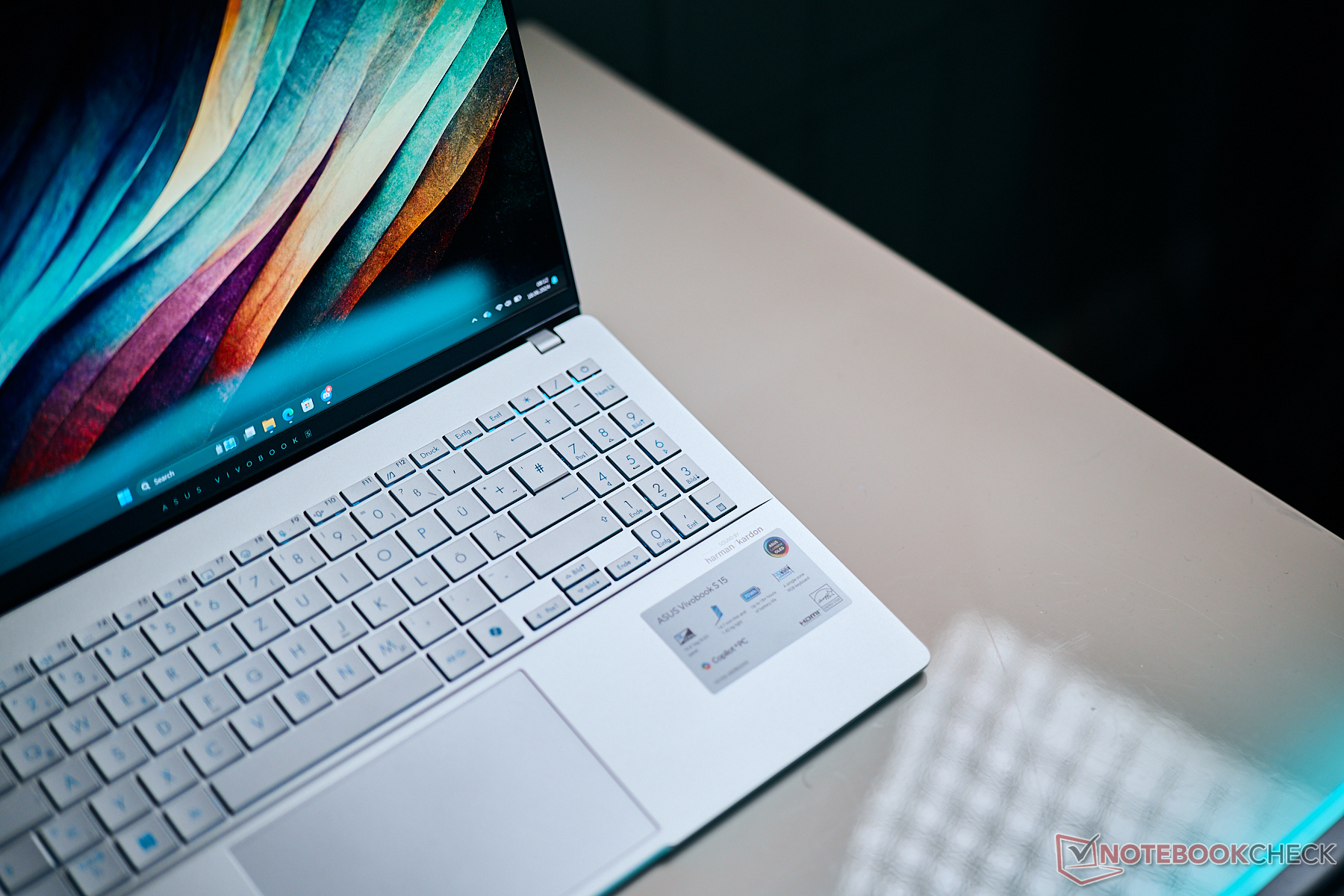
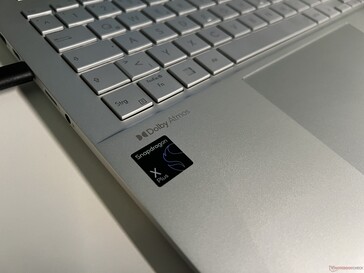

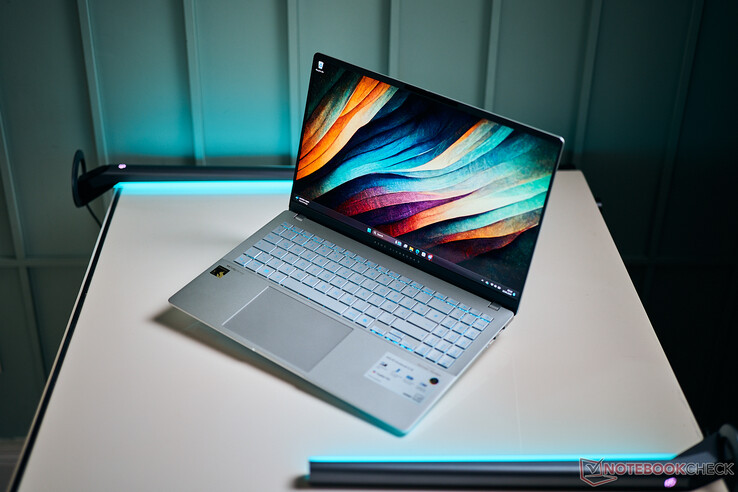







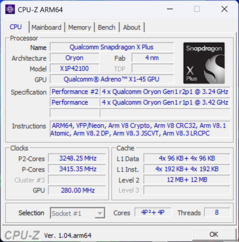
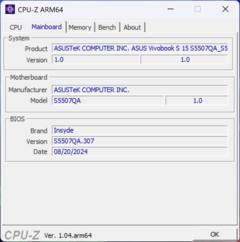
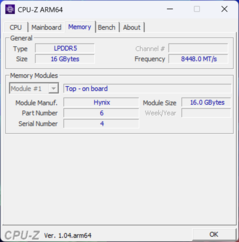


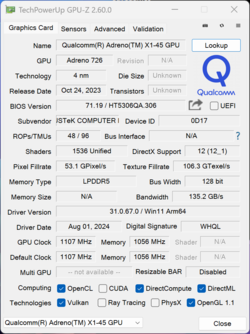
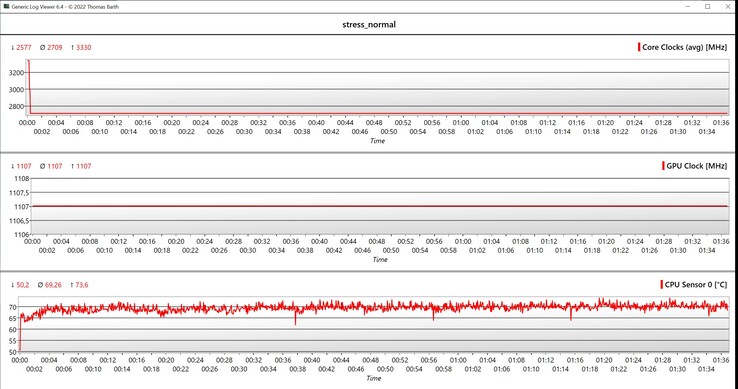


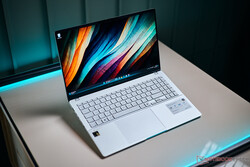
 Total Sustainability Score:
Total Sustainability Score: 

